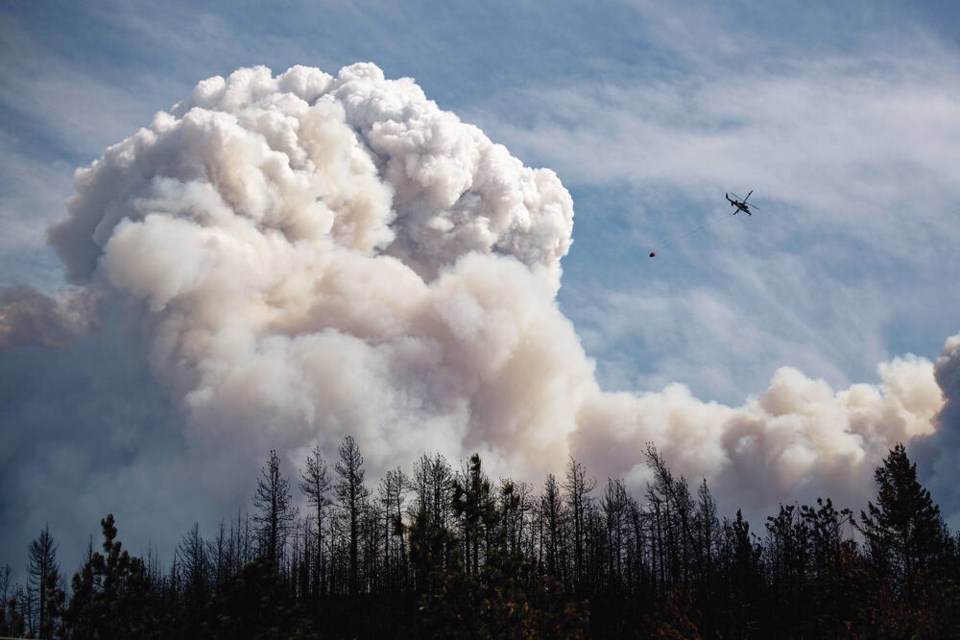We took a trip to Barkerville last week and our timing couldn’t have been better.
The skies were mostly clear except for a few days when some forest fire haze blew up from the south. We were surprised that things were so good.
On the way home, we passed through the Lytton and Boston Bar area on Thursday. The devastation from the June 30, 2021, fire that levelled Lytton is truly disturbing and I hope things will start happening for those good people soon. But on this day the weather was completely clear at least — not a hint of smoke or even any haze.
So I was stunned to read the very next day that the Trans-Canada at Boston Bar and Lytton was closed — wildfires now sweeping through that exact area, where the day before there wasn’t even the smallest sign of any trouble.
B.C. is enduring a cataclysm right now, with no end in sight, and our near-miss made me think about what drivers should do if they’re caught in the middle of one of these infernos.
The first and best advice — as it usually is with driver safety — is avoid the problem in the first place. If the B.C. Wildfire Service is saying: “Don’t go there” then don’t go there. No vacation, or even that great short cut route, is worth your life or the lives of your passengers.
We’ve all seen those flood videos where “that guy” has to drive around the road barricade only to find moments later he’s on the roof of his car calling for help.
The same applies for fire barricades. They’ve closed the road for a reason — it’s simply not worth the risk.
There is now plenty of information on the web to keep motorists informed, in virtually real-time, as to the conditions throughout the province.
In these current conditions, it’s wise to be aware of alternative routes and to keep a good old-fashioned paper map with you, for those times when the ever-dependable internet or GPS device isn’t.
Experts agree that one of the leading causes of civilian wildfire deaths occurs because people wait too long to leave. Every night on the news we see how these fires jump roads, rivers, even lakes. A route that seemed totally clear minutes earlier may be completely consumed in the time it takes to ponder whether you should actually leave or not.
Sadly, many wildfire victims die in their vehicles while trying to escape. The 1991 Oakland-Berkley Hills wildfire claimed the lives of 25 people trapped in their cars when routes became blocked by debris. Forty-seven people died in their vehicles in Portugal in 2017 trying to escape a wildfire. In that case blame was laid on authorities who failed to give timely evacuation orders.
In the worst-case scenario, where you find yourself trapped in your car in the middle of a wildfire, here’s what fire and emergency management officials advise:
• Turn and drive away from smoke and fire if possible. Ensure your head- and taillights are clean to give maximum visibility. Drive slowly. Use your hazard lights.
• A wool blanket is better protection than a synthetic one as wool is more fire-resistant, but in a pinch use a coat or other clothing.
• Keep windows rolled up. Set air conditioning to “recirculate”. Close or block air vents as you evacuate an area to prevent choking and blinding smoke to enter the interior.
• If you must stop, try to keep away from roadside debris, in a clearing or rocky area.
• Leave your engine running, then get as low as possible in the vehicle. It’s important to get below the window level as radiant heat can be intense.
• Keep calm and stay in your vehicle. It’s going to be unpleasant. Officials advise the worst thing to do is bail out at the last moment. Cars virtually never blow up and though they might well catch on fire in these moments, your objective is to let the fire pass rather than jumping into the middle of it.
These are unpleasant prospects for sure, but remember they are absolute last-resort measures. Your best protection is taking fire warnings seriously and not be there in the first place.
Glove Box: Another John wrote this week with a reminder about spare tires. Those tiny temporary spares are a good stop gap — for about 80 kms or so to get to a tire shop — if one is open. Flats always occur on a weekend, 50 kms from the nearest town. John reminds us that, if you have the room, a good old fashioned regular spare tire is your best bet to be able to keep on travelling to a repair place convenient for you.
>>> To comment on this article, write a letter to the editor: [email protected]



